Dispatches from Oxford in the Realm of England
Henry M. Miller, HSMC Director of Research
This blog reports the experiences and findings of Dr. Henry Miller while he is on assignment at the Centre for Medieval and Renaissance Studies at Oxford, England. From September 2011 to May of 2012, he will be conducting research about early Maryland and its English connections, writing, and teaching. Watch this space for Dr. Miller’s research findings, insights on the remarkable history and nature of Oxford and other places he visits, and curious aspects of living in another country.
October 2, 2011
This has been a week focused on reading archaeological theory and colonialism literature for a grant proposal, so not very enjoyable nor worthy of comment. However, Oxford offers many dimensions and I will comment on three of them. One is a wealth of free lectures by varied scholars. I attended one evening lecture on Elizabethan Medicine and Astrology. While that might seem a strange mix, medical treatment and astrology were often linked at the time. Indeed, Astrology was a very popular and serious subject that early Maryland settlers followed. For example, Philip Calvert owned a book entitled Christian Astrology. The place of this lecture was also rather notable, being in the History of Science Museum. It began in 1683 as the first purpose built museum in the English world and is the oldest museum still surviving.
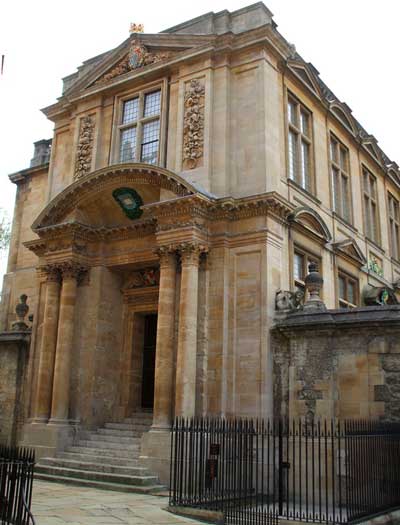
It held the collections of Elias Ashmole, as well as serving as the University anatomy and alchemy lab. These artifacts, such as Guy Fawke’s lantern and Powhatan’s Mantle given to Captain John Smith, formed the core of the collection that is now the Ashmolean Museum.
The lecture by Dr Lauren Kassell addressed some 15,000 pages of documents dating between 1596 and 1634, which are preserved in the Bodleian Library here. They were written by one Simon Forman and his student Richard Napier. Most are what can be called astrological casebooks and they systematically record cases of thousands of people who came to Forman and Napier to seek cures for various maladies. Astrology was seen as an effective method of answering questions and determining causes of sickness, bad luck, or about the future. What is remarkable about these documents is the detail in which they describe over 50,000 individual consultations with 30,000 patients. This is the largest surviving group of medical complaints and diagnoses from common people in the world before 1800. Questions the people asked ranged from how to cure a specific ailment and “will I live?” to “will I become pregnant?” or “Should I marry this person?” There were three explanations for such Astrological Medicine at the time: 1) It was part of the natural world and beneficial, 2) it was the work of the Devil, or 3) it was the work of a quack. The fact that Simon Forman cast astrological charts over 400 times for himself clearly shows that he believed it was a real phenomenon. And given that he had many repeat customers shows others did as well. Many 16th- and 17th-century Europeans shared this view. While pertaining mostly to London residents, this information can give us a refined sense of the things immigrants to early Maryland suffered from, worried about, and how they viewed both sickness and possible cures. Due to the significance of this little explored historical resource, the thousands of consultations are being transcribed and placed into a digital edition accessible to everyone. You can find it at www.magicandmedicine.hps.cam.ac.uk .
The second “Happening” was attending the 50th Anniversary celebration of the Institute for Archaeology. Founded in 1961 by the renowned prehistoric archaeologist Christopher Hawkes, it has been the focus of archaeological scholarship at Oxford. Today, the Institute involves people working on an amazing variety of topics such as dating Neanderthal bones, the frequency of violent deaths among Neolithic people, Roman temples and shipwrecks, and Chinese bronzes, to Anglo-Saxon jewelry and medieval manors. For their 50th-Anniversary, the Institute hosted an open house, a number of short presentations, and an evening reception. They even had a cake, cut of course with the proper archaeological instrument – a trowel.
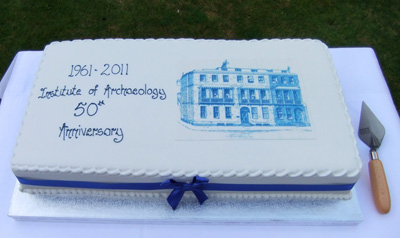
Attending this event gave a wonderful opportunity to see old acquaintances and meet many new people, especially students.
Finally, after a week of little physical activity, Sunday was a great day to get some exercise. England is experiencing beautiful weather with warm conditions that curiously, they are calling “Indian Summer”. This is clearly a North American expression they have adopted. Temperatures soared all the way up to 86 degrees, which passes for a heat wave here. So after church, I headed north, first entering a remarkable piece of land called Port Meadow.
Port Meadown, looking North
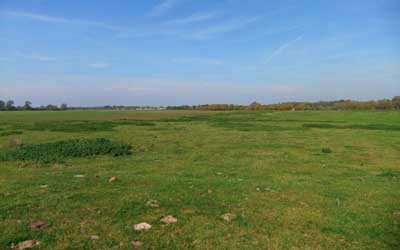
This 300 acre tract is one of the few surviving medieval commons still used for grazing livestock, a practice that has continued here for over 1000 years. The tract was given to the people of Oxford around 896 by King Alfred the Great as a reward for their assistance in fighting the Vikings, or more accurately, The Danes. In the famous Domesday Book of 1086, the presence of this tract as a common for the people of Oxford is clearly stated. Port Meadow has never been plowed nor had pesticides or herbicides applied to it, and because this is so rare, it is considered a unique ecosystem and protected as a “Site of Special Scientific Interest”. In the 17th and 18th centuries, it was also used as a place for horse racing, a favorite sport activity both in England and Maryland at the time. The north end of the commons is defined by the small village called Wolvercote. It is home of “The Trout Inn”, a 17th-century stone structure made famous as the pub of Inspector Morse and also featured in The Saint with Val Kilmer .
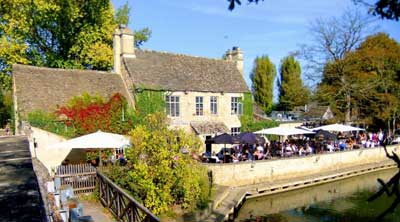
It is extremely popular with tourists and locals.
On the opposite shore of the Thames from The Trout are the ruins of Godstow Nunnery, a religious house founded in 1133. It became somewhat infamous as the home of “Fair Rosamund,” the mistress of King Henry II, who was married to Eleanor of Aquitaine. You will remember both in the excellent although highly fictionalized play and movie, The Lion in Winter. When the affair was finally revealed in 1174, Rosamund retired to the nunnery of Godstow. She died there on the same day as Henry and was buried in the Godstow Church. When the Dissolution of the Monasteries was ordered by Henry the 8th, this nunnery was given to his personal physician. Attacked during the English Civil War, it was destroyed in 1645, the same year as Richard Ingle attacked St. Mary’s City. Little remains of the abbey today, aside from stone walls and the ruins of a single building.
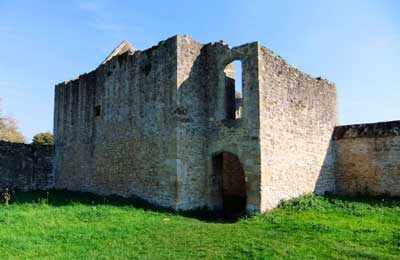
No trace of the church were Rosamund is buried survives, at least above ground. The one building does have a window that still retains its jamb and mullion stones and the wrought iron bars that supported the glass (Picture 6 Godstow Abbey window). You can see the nature of the stonework with the rough walls but fine stone used for the window edging and decorative details. It bears some similarity to our Chapel windows in construction, although dating to ca. 1500. Given the amount of stone and other materials taken from this site for reuse in other buildings, it is surprising that the walls of this one remain, and especially that the original ironwork of the window was not salvaged.
One of the enclosure walls has an elegant blocked doorway.
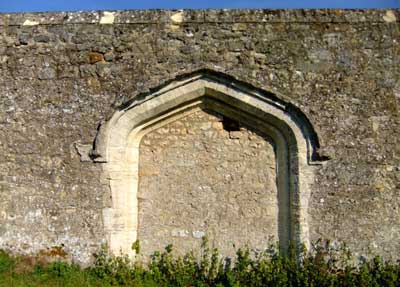
This doorway once connected the cloister to the church at Godstow and was filled with stones at some point after 1545. To me, its closure is a striking symbol of the forced shutting of the vibrant monastic institutions across England that was ordered by Henry the 8th.
The west side of Port Meadow is defined by the River Thames, or Isis as it is called in this section, and I walked back along it. Hundreds of Brits were taking advantage of the warm weather to walk, picnic or even swim in the cool fresh water.
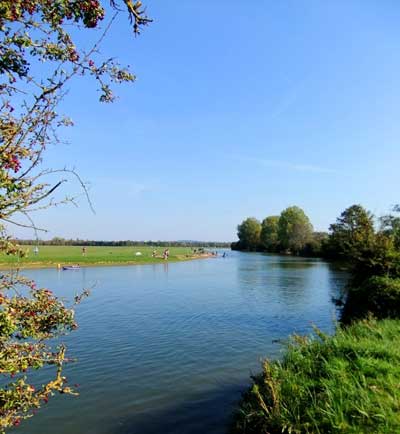
While the meadow has never been plowed, the opposite shore of the Thames was farmed and I was delighted to discover traces of the medieval here.
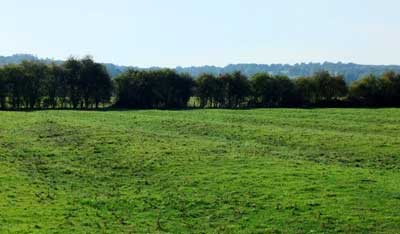
This picture shows Ridge and Furrows, classic evidence of Medieval farming practices. Fields were divided into long strips called furlongs, and the plowing along these developed a pattern of higher ridges and lower furrows over the centuries. It created a corduroy or old washboard type of surface as you can see. In this case, the difference from the top of the ridge to the bottom of the furrow was about two feet but some are over three feet. With the enclosure of fields in the 16th and 17th century, this type of agriculture ended in many areas. In the picture, you can see the hedgerow that now divides up what was once a much larger open field. Such evidence of ancient agrarian practices is even better preserved in some places than this, but many of these medieval field traces are rapidly being destroyed by modern farming that levels everything out. Some Maryland immigrants like Robert Cole were quite familiar with Ridge and Furrows, as he grew grain using the open field system before migrating to the colony.
As I said, the commons here is of ancient date and the river provided water for the livestock. Farmers continue grazing cattle, horses and various types of fowl on the meadow today.
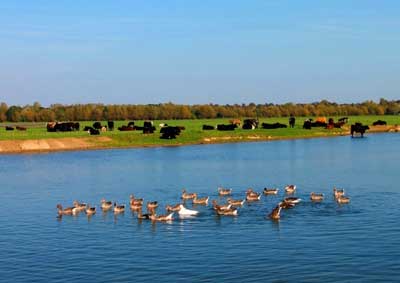
There are many areas along the Thames here where, with only a tiny amount of effort, one can clearly imagine that the scene before you is actually 700 or 800 years ago. The depth of history here is truly remarkable and seems to present itself at every turn.


